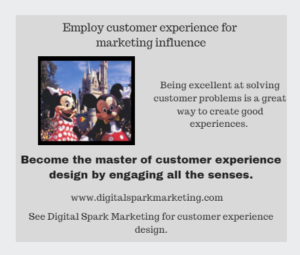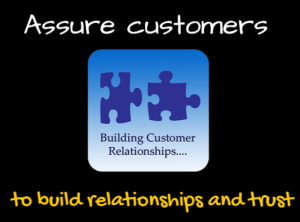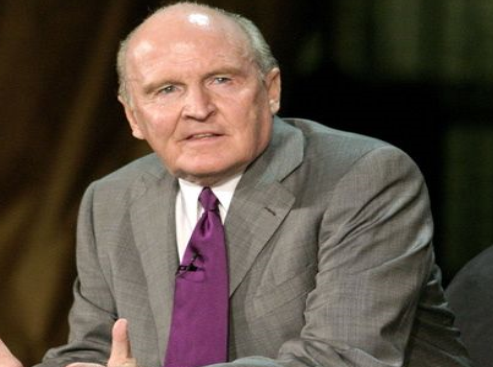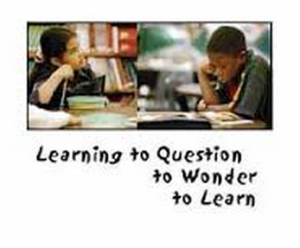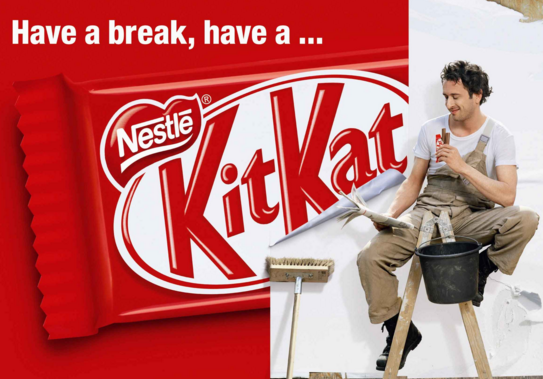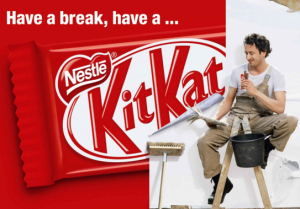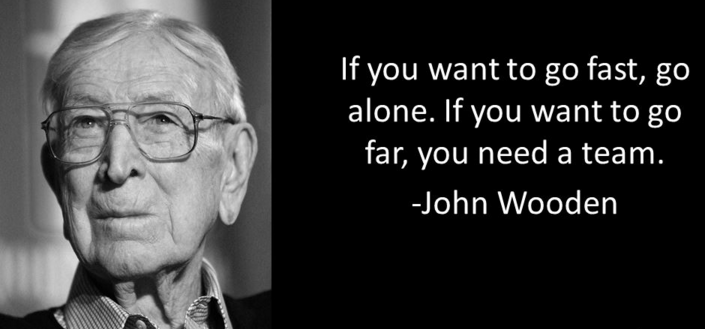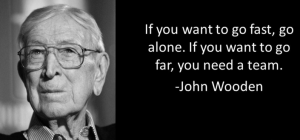That’s the Bezos quote and philosophy we really need to learn from. It’s the philosophy that has made Amazon so successful. It is the one philosophy that makes the Amazon business model really stand out.

And the one that more American corporations need to embrace and understand.
Take a long-term view, and the interests of customers and shareholders align.
–Jeff Bezos
Most of us are familiar with Amazon and Jeff Bezos, their CEO. Amazon is an e-commerce company in everything they do. They have developed all their expertise in the full support of e-commerce. In fact, they now do e-commerce for many other businesses.
Leading disruptive innovation and change involves leapfrogging—creating or doing something radically new or different that produces a significant leap forward. People who possess an unyielding desire to create a breakthrough ensure that everything they do focuses on adding a whole new level of value to customers, the market, and the organization.
Related post: 14 Ways to be Creative on Technology Projects
Amazon has existed in the e-commerce technology world since its inception. They think like a technology company and agile innovators. Only they are innovative in everything they do, not just technology.
They are not afraid to try new things and they can get things done quickly, thanks to the culture their CEO Bezos has instilled.
Bezos’ vision
For years, I’ve been fascinated by Jeff Bezos’ vision. We write a lot about him and Amazon. They are a great company to follow because of Bezos’s vision. And because of his ability to make good bets on his vision.
While everything may seem rosy at Amazon these days, it wasn’t always that way. For years, it was amazing to see just how much criticism there was towards some of Bezos’ decisions.
For years, quite by design, the company focused on growth and expansion over profitability. This earned them many complaints from investors. They are still focused on the future more than the present. That is why they are such good innovators.
More recently, it’s done things that left many scratching their heads. Things such as the whole Amazon Web Services (AWS) effort, and even the Kindle effort. Yet both innovations have proven to be quite successful.
Size and breadth of enterprise
Consider the size and breadth of the Amazon enterprise in three ways, what they are building, what they are buying, and how they are partnering with others.
Amazon is going great guns in all three areas. Let’s consider some examples to illustrate:
Building
Amazon is building its own unique brands and has 4 to date:
Amazon Basics – which represents its own electronics products. The Kindle and Kindle Fire are good examples
Amazon Fresh – which sells and delivers groceries.
Amazon Studios – an online social movie studio.
Amazon Warehouse Deals – a discount warehouse on refurbished products.
Buying
Amazon has brought almost 30 companies in thirty years. One of their most recent buys, ComiXology.
ComiXology offers a well-designed app for buying and reading comic books from more than 75 publishers. It makes it easy to see new comics, which sell for the same price as in-store. And it’s easy to buy back issues, too.
There are also always comics on sale, including collections for a great price.
Did you know that Amazon owns Zappos, Pets.com, and Diapers.com? All purchased to become part of the Amazon enterprise.
Partnering
They partner to offer their e-commerce services to make other companies better at on-line business. Sometimes it’s just providing the service, other times it is to combine products, like they have done with Toys Are Us.

Rapid growth
Amazon’s growth is a relative measure. Here are several comparisons that will surprise you.
In the first 5 years of their existence, these are revenue comparisons:
EBay .4B
Google 1.5B
Amazon 2.8B
Information technology is a core competency
Amazon is very aware that information technology is at the heart of their most important core competencies. Here are several that they use and also source to other businesses:
Cloud computing
Unless you work in technology or corporate logistics, you might not have known that Amazon was ahead of Google in the cloud business. Most consumers will have encountered the cloud in the form of services where Google is strong. Such as email (Gmail), document storage (Google Drive), and the like.
But Amazon Web Services has for years been the front-runner in the business of renting computer power to companies.
To understand the scale of the war brewing between them, it helps to understand that where Amazon and Google are really competing. That is, who gets to eat a bigger portion of the total corporate information-technology pie.
Included are all the warehouses of servers that run the whole of the internet, all the software used by companies the world over, and all the other IT services companies hire others to provide. All of these, or which they provide internally, will be worth some $1.4 trillion in 2014, according to Gartner Research. This is some six times Google and Amazon’s combined annual revenue last year.
Not surprisingly, both companies have said at one point or another that this new revenue stream has the potential to be larger than all their current sources of income.
Amazon Web Services
Amazon Web Services (AWS) is a collection of remote computing services that together make up a cloud computing platform, offered over the Internet. The most central and well-known of these services are the simple storage service (S3) and the elastic compute cloud (EC2).
In 2010, Amazon launched 61 new services and features. In 2011, that number was 82. In 2012, it was 159. In 2013: 280.
They are also expanding their geographic footprint, with 10 current AWS regions around the world, These regions include the East Coast of the U.S., two on the West Coast, Europe, Singapore, Tokyo, Sydney, Brazil, China, and a government-only region called GovCloud.
The development teams work directly with customers and are empowered to design, build, and launch based on what they learn.
Prime Instant Video
Prime Instant Video was launched in 2011 to provide customers streaming video on demand, analogous to books. In 2011 with 5,000 titles, they’ve grown selection to more than 40,000 movies and TV episodes.
The Amazon Studios team continues to invest heavily in original content and will compete in the new TV market of the future.
Fire TV
Recently, the Amazon team launched Fire TV. Not only is Fire TV the best way to watch Amazon’s video offerings, it also embraces non-Amazon content services like Netflix, Hulu Plus, VEVO, WatchESPN, and many more.
In addition to Prime Instant Video, Fire TV gives you instant access to over 200,000 movies and TV episodes available a la carte. As a bonus, Fire TV also lets you play high-quality, inexpensive games on your living room TV.
Is Amazon the most innovative company?
Amazon business model … most innovative company
Amazon, we believe, is the most innovative company in America in an industry built around constant innovation and change. Why, you may ask?
We believe there several good reasons. First, as one of the creators of the e-commerce industry, they well know the industry is in its infancy. They know it is built on a foundation of new technology and constant introduction of new ways of doing things.
Second, they know their future is based on those trends. They also know to do new things well; they must be good at trying new ideas in many areas as experiments.
These experiments, they realize, will not all work as planned, and some percentage will fail. They know and accept this without worry.
Innovative vision. We are always fascinated by this skill. It is one of the best business skills to have in our view.
Does it mean you see everything? Certainly not. It does mean you have the ability to see what many cannot. And then act on these items.
That is what makes for the most innovative company, in our minds. Lots of experiments and exploring. Innovation doesn’t work well without experimentation and lots of action.
And Amazon is the best of the best, in our opinion.
Keys to business strategy
Priority 1
Focus on on-line business … it has far fewer limits than the brick and mortar space.
Priority 2
Control customer accounts. This means to own the cash register, and to build customer trust and confidence.
Priority 3
Establish an ecosystem around Kindle and Kindle Fire products. Their goal is to achieve digital supremacy on the order of Apple and Google.
As an example, they view Kindle as a service and not a device. They view the Kindle Fire not as a low cost iPad, but a high quality digital device dedicated to the digital content experience (music, apps, videos, and of course, books).
Interesting perspective, isn’t it?
Related post: Game Changing Capabilities for In-Store Retail Business
The future?
Thinking about these areas above, it is not too hard to imagine the following future business goals for the Amazon enterprise:
Expand Kindle and Kindle Fire Ecosystem
Both of these have enormous growth in services and future applications yet to be discovered.
Same day delivery
Win the logistics war on delivery to make the on-line business bigger than brick and mortar.
Create Amazon supply
Their goal is to supply small to medium size businesses. Look out FedEx and UPS.
More digital product focus
They want to be on the leading edge with all digital products. This is especially so in products with the most business potential, as the new TV technology.
The bottom line
Prognosticators and futurists try to predict what will happen through some combination of extrapolation and supposition, but the truth is the future will most be shaped by the choices we make. We could have chosen to make our society more equal, healthier, and happier, but did not. We can, of course, choose differently. The future will be revealed in what we choose to build.







